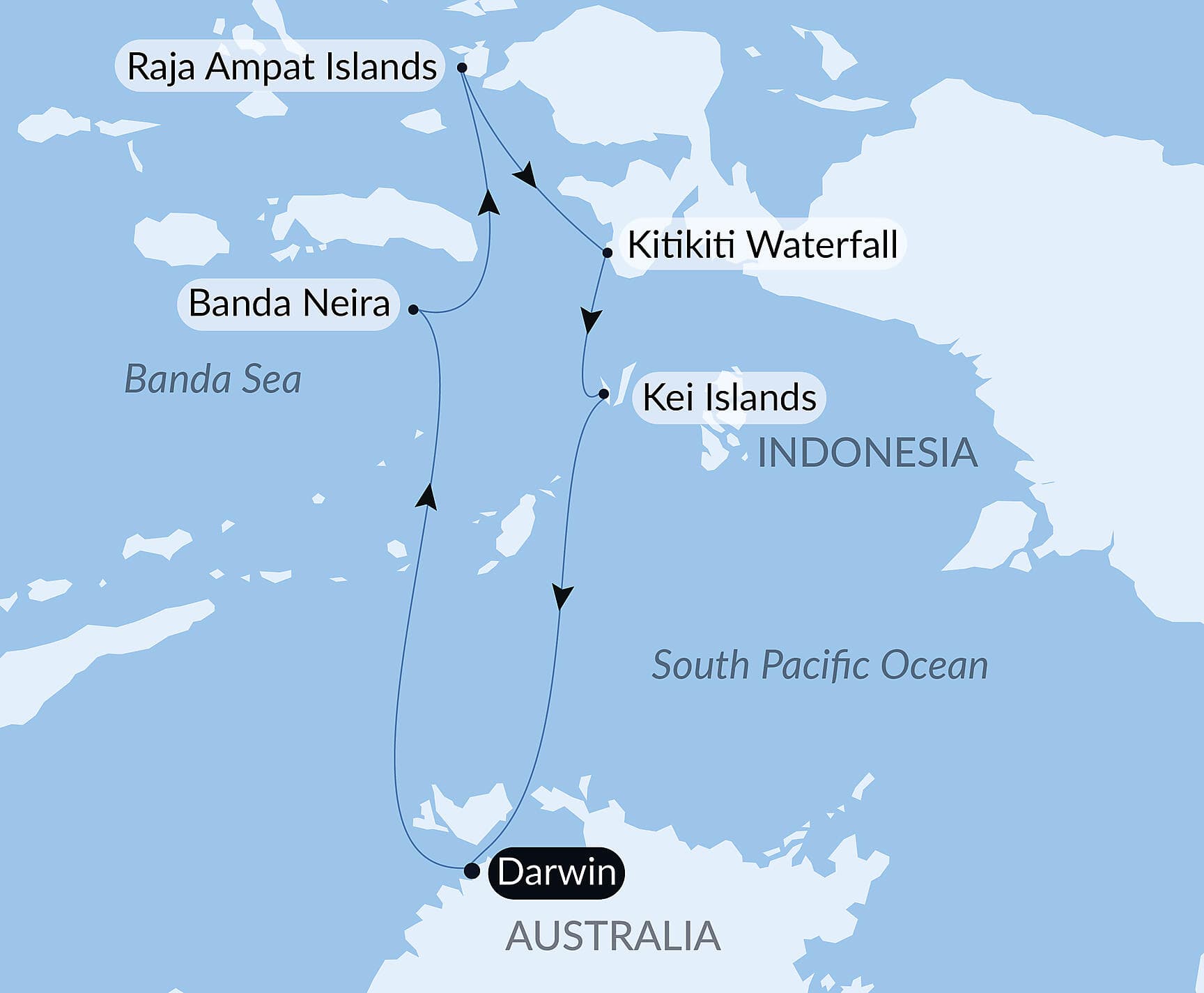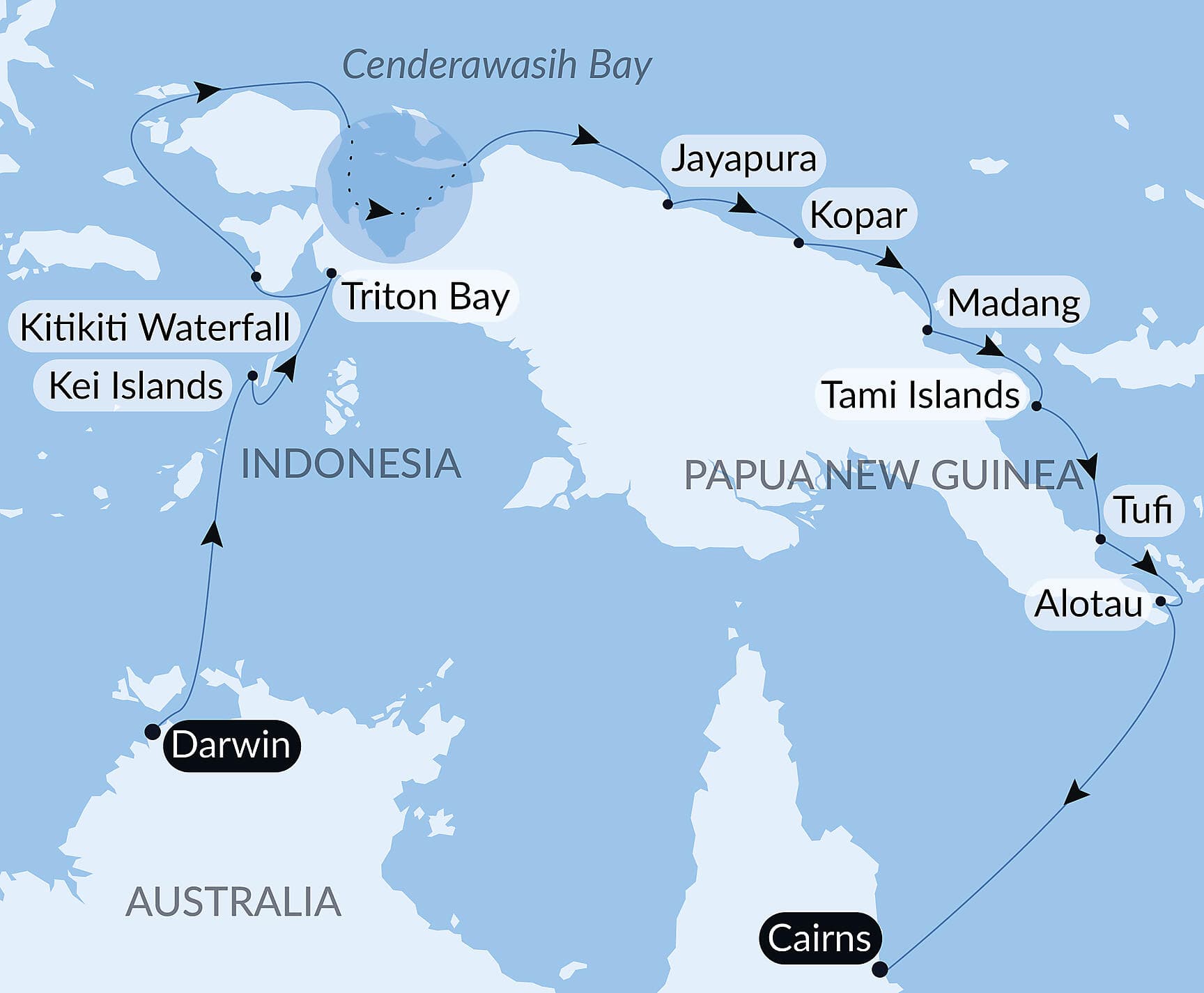Papua New Guinea, Vanuatu and the Solomon Islands
Discover the destination
Why Papua New Guinea, Vanuatu and the Solomon Islands?
9 cruises in Papua New Guinea, Vanuatu, and Solomon Islands
Voyage to Indonesia: Dragons, Reefs, and the Spice Islands – with Smithsonian Journeys
From
Benoa, Bali (Indonesia)
To
Darwin (Australia)
11 nightsaboard the shipLe Jacques Cartier
Next departure
From
Lautoka, Viti Levu Island (Fiji)
To
Guam (Guam)
16 nightsaboard the shipLe Soléal
Next departure
From
$12,680 /person*
Voyage to Indonesia: Dragons, Reefs, and the Spice Islands – with Smithsonian Journeys
From
Benoa, Bali (Indonesia)
To
Darwin (Australia)
12 nightsaboard the shipLe Jacques Cartier
Next departure
From
Benoa, Bali (Indonesia)
To
Darwin (Australia)
12 nightsaboard the shipLe Soléal
Next departure
From
Darwin (Australia)
To
Lautoka, Viti Levu Island (Fiji)
16 nightsaboard the shipLe Jacques Cartier
Next departure
From
Darwin (Australia)
To
Darwin (Australia)
11 nightsaboard the shipLe Soléal
Next departure
New Guinea Odyssey
From
Darwin (Australia)
To
Cairns (Australia)
16 nightsaboard the shipLe Soléal
Next departure
From
$14,240 /person*
From
Cairns (Australia)
To
Darwin (Australia)
16 nightsaboard the shipLe Soléal
Next departure
From
Lautoka, Viti Levu Island (Fiji)
To
Guam (Guam)
15 nightsaboard the shipLe Soléal
Next departure
*Price is per person, based on double occupancy, based on availability, and subject to change at any time. The category of stateroom to which this price applies may no longer be available.
See the cruises in the Pacific Islands
Explore

More Inspiration
Upcoming departures, unique experiences, interviews, exploration or scouting stories — all brochures can be ordered in print or downloaded in digital format.














